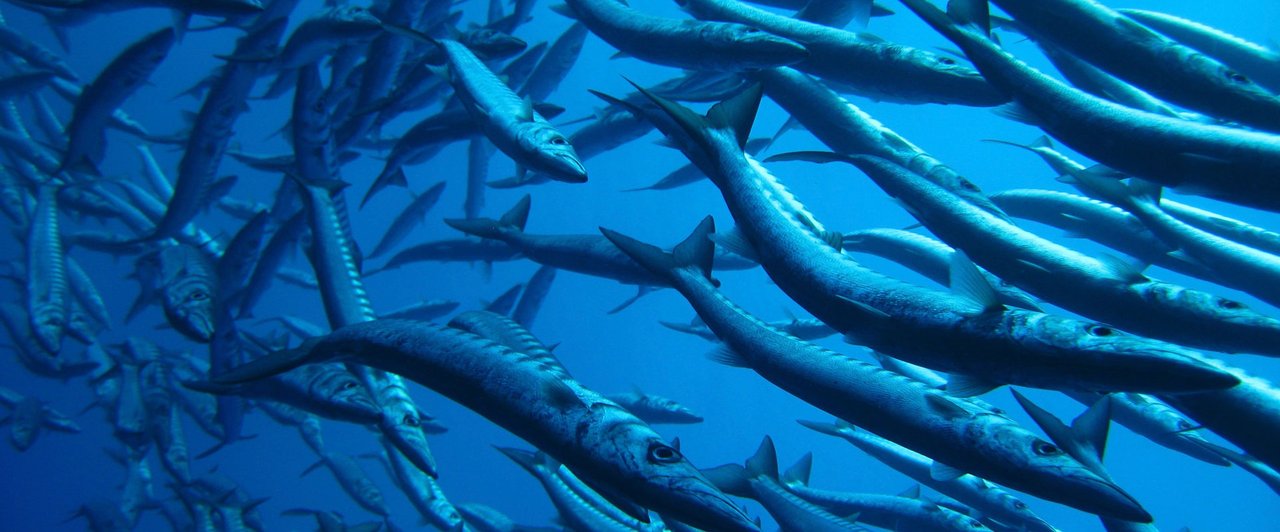How tech is being used to keep fisheries in line
Jessica Rawnsley, Financial Times
Pick up an Austral Fisheries toothfish loin in the supermarket, scan the barcode on the back of the packet, and you’ll be able to follow every step in the fish’s journey from deep ocean to shop shelf. Where and when the fish was snared; which vessel lugged it onboard; the date it was unloaded in Mauritius; any Marine Stewardship Council or climate certifications. Even the name of the boat’s skipper.
“We haven’t quite got the names of the skipper’s children yet but that would be possible if we wanted to,” jokes David Carter, Austral Fisheries CEO.
The tech that enables such a detailed telling of the fish’s story is blockchain. Austral Fisheries started using blockchain labelling as part of a pilot with the World Wildlife Fund (WWF) in 2018. Today, the digital ledger covers its toothfish operations and a growing chunk of its shrimp catch.
Once caught, each fish is tagged and traced from hook to plate on a blockchain-based platform, OpenSC, with a unique identification number linked to GPS coordinates of where the vessel was at the time of catch. Digital, tamper-proof, and updated in real-time, blockchain provides information that a physical label never could. The ambition is to boost transparency and accountability in the often murky waters of seafood supply chains.
This matters. More than a third of fish populations are overfished. Bycatch - unintentional marine life capture - is a massive problem. In some estimates, bycatch accounts for a whopping 40-50 per cent of total annual marine catch. Unregulated and unsustainable fishing is prolific. Seafood fraud is prevalent on a global scale: supermarket products are regularly mislabelled. The UN Food and Agriculture Organization warns that ‘‘illegal, unreported and unregulated (IUU) fishing remains one of the greatest threats to marine ecosystems’.
Weak monitoring along the supply chain means much of this misconduct goes unchecked. And convoluted chains, spanning multiple countries and involving hundreds of transactions, make fishing one of the most opaque industries in the world.
In recent years, a number of start-ups and environmental NGOs have been working to fill in the blanks with the aid of sensors, satellites, and AI.
Global Fishing Watch was among the first to make real waves. Founded in 2016, the NGO uses satellite tech, cloud computing and machine learning to monitor the activity of fishing vessels at sea, detect false identities, and report unlawful behaviour. OceanMind, likewise, has developed cutting-edge technology alongside Microsoft: algorithms highlight suspected non-compliance and deliver intelligence to regulators. The company says it has seen demonstrable improvements in fisheries compliance in the UK and Thailand as a result.
Yet many of the world’s fisheries still lurk under the radar. Part of the difficulty is that small-scale operations account for half of the global seafood catch and 90 per cent of industry workers - and most do not use traceability tech.
“There’s this conundrum,” says Blake Lee-Harwood, chief programs officer at Sustainable Fisheries Partnership. “You get the greatest traceability in those fisheries that are already the most sustainable: heavily capitalised, industrial fisheries, with an extraordinary amount of management and data and control. Whereas the really awful fisheries tend to have really poor data and really poor traceability.”
The SFP has built a number of platforms to enhance monitoring. FishSource identifies stocks and fisheries and standardises global sustainability assessments. A pilot programme, SkipperWatch, will empower local fishermen to report illegal fishing on mobile apps.
A key focus is mobilising industry to demand better. “We think we can tip the market in terms of making strong demands for 100 per cent electronic observation of boats,” says Lee-Harwood. SFP audits the potential impact of fish sourcing by individual retailers - such as Asda or Co-op - on endangered species. The retailers then demand best practice across their supply chains.
Innovations like electronic monitoring onboard vessels, if widely adopted or enforced, could turn the tide on illegal fishing.
Taking another tack, SafetyNet Technologies has spent the past decade upgrading the humble fishing net. The impetus, founder Dan Carter says, was the fact that “fishing nets had been out there for thousands of years but we still catch the wrong stuff”.
LED lighting clipped to fishing gear illuminates the net in a colour that attracts or repels certain species. “The first step is the physiological one: what can the fish actually see?” explains Carter. “Step two is the behavioural one. Say you have two species that can both see the same light - what’s their response to that?” Placing the right colour light on a net could signal a warning to a turtle, but be invisible to a fish, thus massively reducing bycatch. The company is working on a raft of other tech to enable this kind of precision fishing.
So far, its Pisce net lights have made their way all over the world, from Scotland to Latin America. Carter cites a trial on a shrimp fishery in Oregon as a particular success. The nets drove a 90 per cent bycatch reduction. “That was then speedily introduced into local regulation to make it mandatory use in Oregon and Washington. We’re working to see if we can expand it to shrimp in the Gulf of Mexico”.
The process is rarely so smooth. The initial obstacle, Carter says, is persuading fisheries to come on board: the expense, hassle, and risk to business put many off. Each new fishery requires a trial. One underway on a scallop vessel in the US will cost $1.1mn.
With any of these innovations - be it electronic monitoring or blockchain - convincing every cog in the supply chain to comply is challenging without the carrot of money or stick of regulation. Most of the sector’s funding to date has been philanthropic.
Today’s tech pioneers say that more investment and better collaboration is vital to enable the traceability industry to grow. In a rapidly warming world, where increasing numbers of ocean dwellers face extinction, the fishing industry will need all hands on deck if it’s going to survive.


